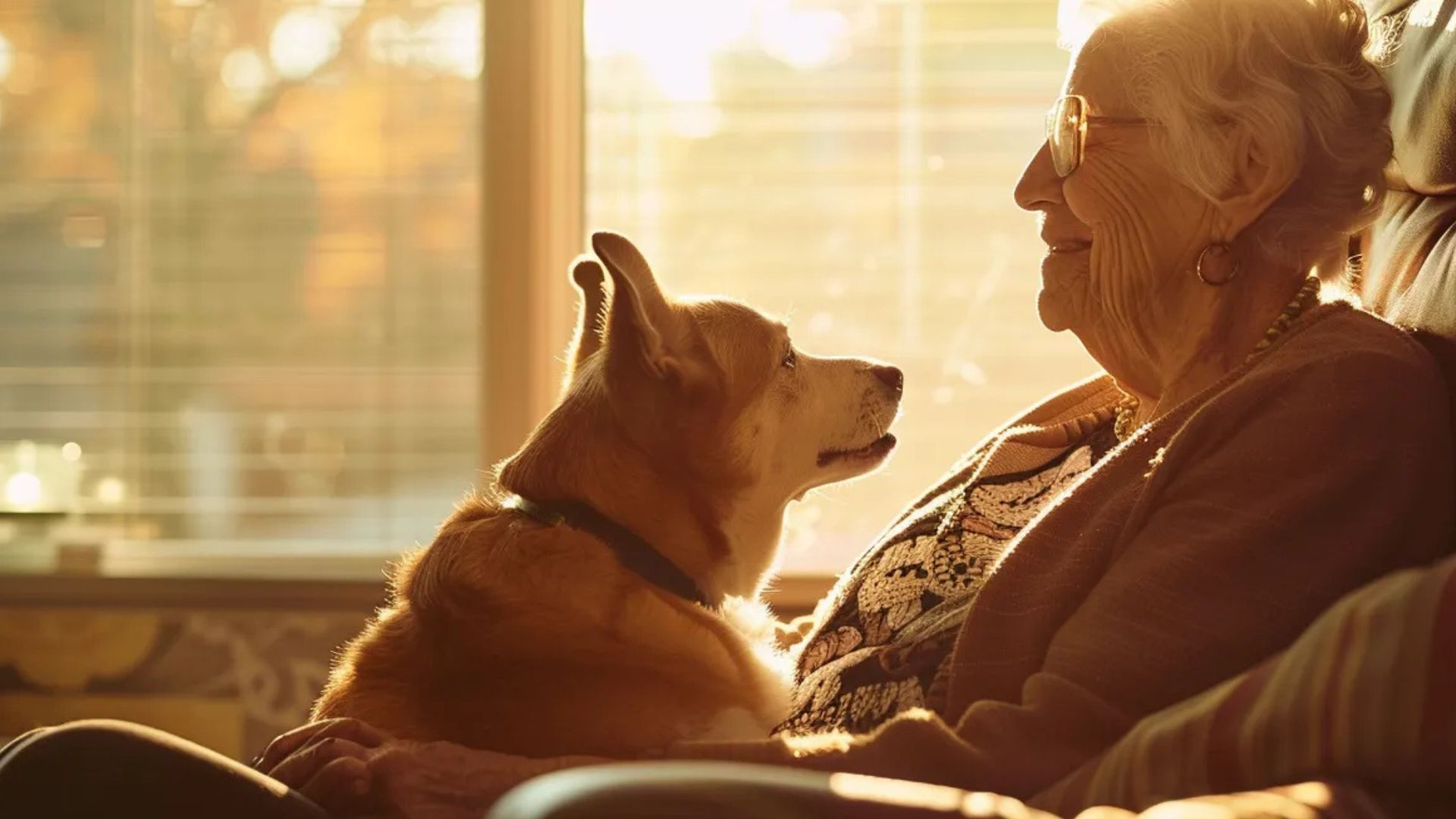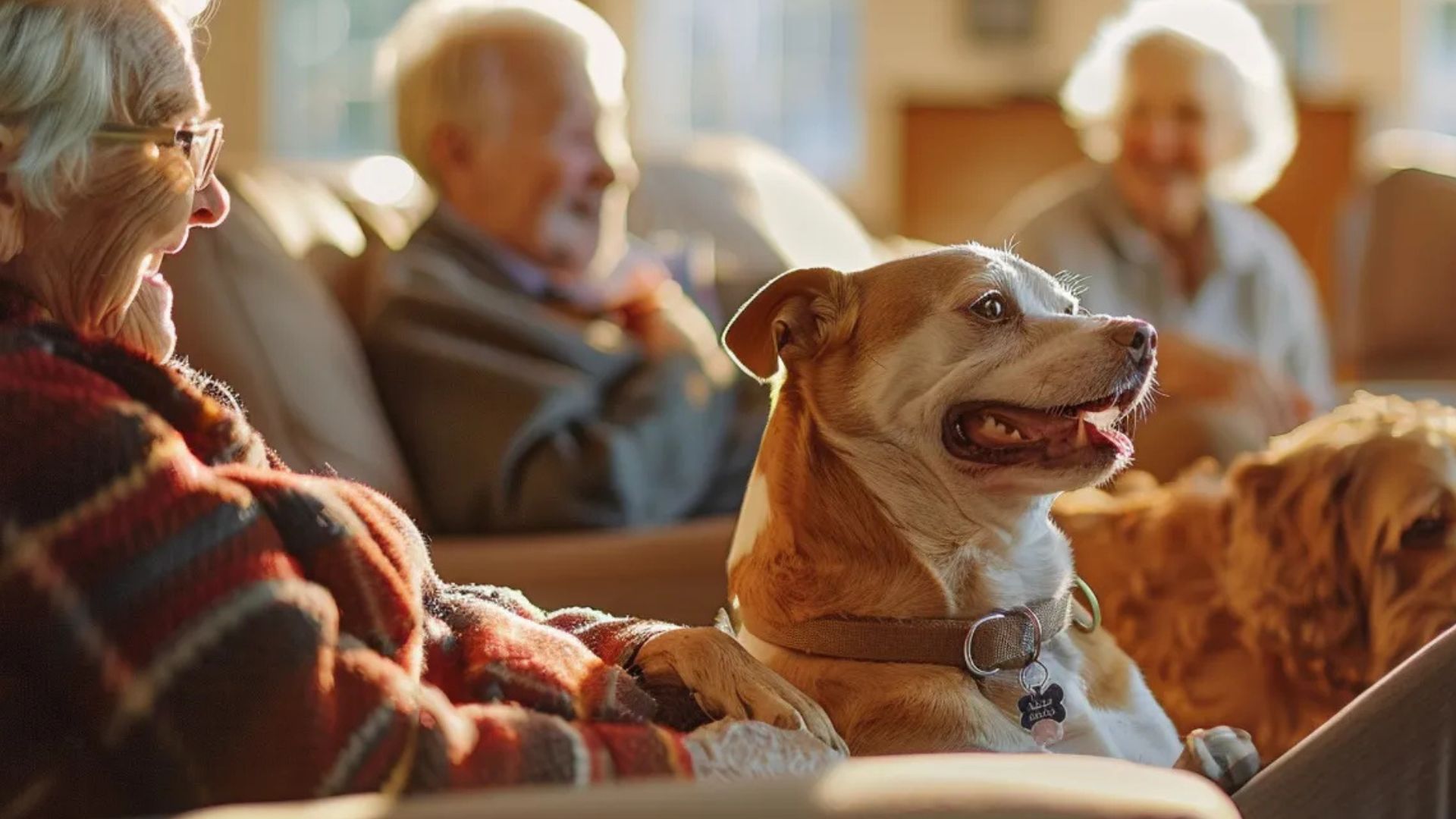The Importance of Pet Therapy in Assisted Living Settings
Many believe that assisted living settings must prioritize medical care above all else, but pet therapy can significantly enhance the quality of life for residents. This article will explore how pet therapy enables emotional and physical benefits, discuss ways to implement effective programs, and address training requirements for therapy animals. By understanding these aspects, readers will gain insights into how pet therapy can alleviate feelings of loneliness and anxiety among seniors, providing an alternative path to support their overall well-being. The valuable data and education shared here will help facilities better integrate pet therapy into their care menus.
Key Takeaways
• Pet therapy significantly enhances emotional well-being by alleviating loneliness and promoting social interaction
• Residents engaging with therapy animals experience improved mobility and overall physical health benefits
• Successful pet therapy programs require thorough preparation and ongoing evaluation for maximum effectiveness
• Creating a nurturing environment through animal companionship fosters deeper connections among residents
• Addressing logistical concerns can enhance participation and support the overall success of pet therapy
Recognizing the Benefits of Pet Therapy in Assisted Living

Pet therapy brings numerous benefits to residents in assisted living environments. Understanding how pet therapy improves emotional well-being is essential, along with recognizing the physical health benefits of animal companionship. This therapy enhances social interactions, reduces anxiety, and offers positive outcomes for residents with dementia. Moreover, pets help create a nurturing environment, reinforcing the importance of these connections in residential care settings across states like Missouri and Wisconsin.
Understand How Pet Therapy Improves Emotional Well-Being
Pet therapy plays a significant role in enhancing the emotional well-being for residents in assisted living facilities, such as nursing homes in Pennsylvania and Ohio. Interaction with animals fosters a sense of companionship that can alleviate feelings of loneliness and isolation often experienced by seniors. By integrating pet therapy into daily activities of living, residents not only find joy but also improve their overall mental health and quality of life through meaningful connections with animals:
• Increased social interaction with fellow residents during pet visits.
• Reduction in anxiety levels through gentle, comforting animal presence.
• Improved mood and positivity from the joy pets bring.
• Encouragement of involvement in therapeutic activities tailored around pet care.
Identify the Physical Health Benefits of Animal Companionship
Animal companionship offers several physical health benefits to individuals in assisted living settings. Engaging with pets can encourage residents to participate in physical activities, such as walking or playing, which promotes mobility and improves overall health. Furthermore, studies indicate that the presence of therapy animals can lower blood pressure and reduce heart rate, contributing to better cardiovascular health for seniors across regions, including New Hampshire and Atlanta.
• Improved mobility through increased physical activity with pets.
• Enhanced cardiovascular health from reduced stress and lower blood pressure.
• Encouragement of social engagement with fellow residents during pet interactions.
• Boost in overall well-being and happiness from the companionship of animals.
Explore Social Interaction Enhancements Through Pet Therapy
Engagement through pet therapy significantly enhances social interactions among residents in assisted living environments. In senior communities near Houston, the presence of therapy animals encourages residents to bond over shared experiences, which can lead to deeper connections and a sense of belonging. These interactions not only boost the emotional wellness of individuals but also foster a more vibrant lifestyle, making options for senior independent living near me increasingly appealing for families seeking fulfilling environments for their loved ones.
Evaluate the Impact of Therapy Animals on Reducing Anxiety
Therapy animals play a vital role in alleviating anxiety among residents in assisted living facilities. Their presence can foster a calming environment, making it easier for individuals to navigate daily living challenges. In communities such as Cedarhurst Senior Living, residents report feeling less anxious and more at ease after interacting with therapy pets, enhancing their overall well-being:
• Therapy animals provide comfort during visits, alleviating stress.
• Routine interactions with animals help create a sense of stability.
• Residents in retirement homes near me often find companionship that reduces feelings of isolation.
• Pet therapy fosters a positive atmosphere, contributing to emotional resilience in living communities.
Discover Positive Outcomes for Residents With Dementia
Pet therapy has shown considerable positive outcomes for residents with dementia, particularly in fostering communication and engagement. For communities in places like North Carolina, introducing therapy animals can create a sense of security, helping individuals feel more at ease and connected. By integrating animals into the management of care routines, assisted living facilities enhance the overall quality of life for residents, making options for independent senior living near me more appealing for families seeking suitable environments for their loved ones.
Learn How Pets Promote a Nurturing Environment
Pets contribute significantly to creating a nurturing environment in assisted living facilities, including those in Indiana. The presence of animals fosters warmth and companionship, which can ease feelings of loneliness for residents. By integrating pet therapy into community activities, such as those offered at various village centers, assisted living options become more appealing, positively impacting residents' overall satisfaction and quality of life without incurring a substantial fee.
Implementing Pet Therapy Programs in Assisted Living

Starting a pet therapy program in a senior living community involves assessing necessary requirements, such as suitable facilities and staffing needs. It is essential to determine the qualifications for therapy animals and their handlers while creating guidelines that ensure a safe environment for all. Establishing partnerships with local animal therapy organizations further supports program effectiveness. Monitoring and evaluating the sessions allow caregivers to track outcomes while encouraging resident feedback fostering engagement and ensuring the program meets their needs.
Assess the Requirements for Starting a Pet Therapy Program
Assessing the requirements for starting a pet therapy program in retirement homes involves a thorough understanding of both facility needs and staff capabilities. In Utah and West Virginia, successful programs often start by identifying the qualifications for therapy animals and handlers, ensuring they meet safety and health standards. Additionally, gathering information about the specific medication and health needs of residents can help tailor the program, making animal interactions both safe and beneficial for everyone involved.
Determine the Qualifications for Therapy Animals and Handlers
Determining the qualifications for therapy animals and handlers is a critical step in implementing effective pet therapy programs in assisted living settings. In nursing facilities such as those in Miami, it is essential to ensure that therapy animals are certified and meet specific health and temperament standards to provide safe and positive interactions with residents, particularly those with memory care needs. Handlers should also possess training and experience in facilitating therapeutic sessions, ensuring that the cost and logistics of the program align with the community’s resources while prioritizing the well-being of all participants at the site.
Create Guidelines to Ensure a Safe Environment for All
Creating guidelines that ensure a safe environment for pet therapy in assisted living facilities is essential for protecting both residents and animals. Establishing clear protocols for interactions, including scheduled visits and supervision during sessions, allows residents to enjoy the benefits of exercise and companionship while minimizing risk. Moreover, engaging with a concierge service can help families in Connecticut schedule a tour, providing insight into how pet therapy programs are implemented, and enhancing both emotional support and safety for everyone involved.
Establish Partnerships With Local Animal Therapy Organizations
Establishing partnerships with local animal therapy organizations is crucial for successful pet therapy programs in senior living communities throughout Michigan. These collaborations ensure that facilities have access to trained therapy animals and skilled handlers who understand the unique needs of residents in long-term care settings. By working together, these organizations can also provide ongoing support, resources, and training, enhancing the impact of pet therapy on the emotional well-being for seniors and creating a more nurturing atmosphere within the community.
Monitor and Evaluate the Effectiveness of Therapy Sessions
Monitoring and evaluating the effectiveness of pet therapy sessions is essential for ensuring that assisted living residents receive maximum benefit from these programs. Senior living communities near me, especially in places like Boston and Idaho, can track improvements in emotional health, social engagement, and overall well-being by conducting regular assessments and gathering feedback from residents and staff. Utilizing Medicaid resources can also provide support for these initiatives, ensuring that they are tailored to the unique needs of residents and continually enhanced to create a compassionate environment.
Encourage Resident Involvement and Feedback About Programs
Encouraging resident involvement and feedback about pet therapy programs holds significant value in enhancing the effectiveness of these initiatives in assisted living facilities. In places like New Mexico, where accessibility to engaging activities can impact residents’ experiences, actively involving seniors in program discussions can help tailor the therapy to meet their preferences and needs. By fostering a platform for residents to share their thoughts, communities can create pet programs that resonate more deeply with those in retirement living near me, ensuring a rewarding and meaningful engagement.
| Key Aspects of Encouraging Resident Involvement | Benefits |
|---|---|
| Gathering Feedback | Enhances program relevance and enjoyment. |
| Assessment of Accessibility | Ensures pet therapy is inclusive for all residents. |
| Creating a Sense of Ownership | Increases satisfaction and emotional connection. |
| Facilitating Open Discussions | Allows for diverse input on program elements. |
| Adapting to Feedback | Improves overall effectiveness of pet therapy. |
Training Therapy Animals for Assisted Living Settings

Identifying essential traits in therapy animals is crucial for effective support in an assisted living community. The training process for therapy dogs and cats entails socialization techniques, which enhance their interaction with residents. Recognizing the role of handlers during training and understanding certifications and accreditation for these animals further establish best practices. Successful training programs in Illinois highlight the importance of these elements in providing valuable health care and emotional support.
Identify Essential Traits in Therapy Animals
Identifying essential traits in therapy animals is crucial for ensuring effective support in assisted living settings. These animals should possess a calm demeanor, social temperament, and adaptability to various environments, allowing them to interact comfortably with residents. Additionally, it is vital to consider the training process that prepares these animals for the unique challenges of living communities, particularly where independent living for seniors or independent living assisted options are offered, which may often require consideration of assisted living cost and insurance implications:
| Essential Traits in Therapy Animals | Description |
|---|---|
| Calm Demeanor | Helps reduce anxiety and creates a comforting presence. |
| Social Temperament | Encourages engagement and interaction with residents. |
| Adaptability | Allows for a smooth transition between different environments and residents. |
| Training | Equips pets with skills to respond positively in varied situations. |
Outline the Training Process for Therapy Dogs and Cats
The training process for therapy dogs and cats involves several key steps that ensure these animals are well-prepared for their roles in assisted living communities. This typically includes early socialization in environments similar to those found in facilities across states like New Jersey, South Dakota, and Arizona, where interactions with diverse groups of people occur. Through structured training programs and consistent reinforcement, therapy animals learn to exhibit calm behavior and respond positively to residents, enhancing their emotional and social experiences while creating a lasting legacy of comfort and companionship in their new living environments.
Discuss the Importance of Socialization for Therapy Pets
Socialization is crucial for therapy pets as it prepares them for interactions with residents in assisted living facilities, including those in Oregon. These animals must become comfortable in various environments and with different people to foster positive experiences during activities like happy hour events. Care Concierge Services can further enhance socialization opportunities by organizing group activities where therapy pets participate, allowing residents to interact with them in a relaxed setting while contributing to their health and emotional well-being:
• Preparation for diverse interactions.
• Building confidence in therapy animals.
• Enhancing the overall quality of life for residents.
Recognize the Role of Handlers in the Training Process
Handlers play a vital role in the training of therapy animals within assisted living settings, ensuring that these pets adapt effectively to the needs of residents. In places like Colorado and Seattle, handlers are responsible for guiding the animals through a structured training process that emphasizes socialization and positive interactions with seniors. This training helps create a nurturing environment where residents can enjoy companionship during various activities, such as meal times, contributing positively to their overall well-being in communities across Dallas and beyond:
• Handlers ensure therapy animals are comfortable around seniors.
• They facilitate socialization opportunities for animals in training.
• Handlers provide ongoing support to enhance the pet-resident bond.
Review Certifications and Accreditation for Therapy Animals
Reviewing the certifications and accreditation for therapy animals is essential for ensuring their readiness to assist seniors in assisted living settings. In North Dakota, for instance, therapy animals must meet specific training standards set by recognized programs, which often include health evaluations and behavioral assessments to guarantee they can interact safely and positively with residents. Adhering to these guidelines not only enhances the effectiveness of pet therapy but also aligns with Medicare requirements that emphasize the importance of quality care for seniors.
• Understanding therapy animal certifications ensures safety and effectiveness.
• Programs in North Dakota establish standards for animal training and health.
• Compliance with Medicare requirements enhances care quality for seniors.
Share Successful Training Practices From Established Programs
Successful training practices for therapy animals in assisted living settings focus on early socialization and consistent reinforcement. Programs from established organizations often incorporate structured training sessions that emphasize positive interactions with seniors, ensuring the animals are comfortable in various environments. By collaborating with professional trainers, communities can create tailored programs that enhance the emotional support provided by therapy pets, ultimately benefiting both residents and animals involved in the therapy.
Engaging Residents Through Pet Therapy Activities

Engaging residents through pet therapy activities is vital in enhancing their well-being. Planning interactive sessions featuring animals can boost joy, while regular pet visits foster emotional connections. Additionally, designing activities that promote physical movement with pets, facilitating creative arts and crafts sessions, encouraging storytelling and reminiscence, and creating themed events that celebrate the bond with therapy animals further enrich the lives of seniors in assisted living settings.
Plan Interactive Sessions Featuring Animals to Boost Joy
Planning interactive sessions that feature animals can significantly enhance the joy experienced by residents in assisted living settings. Activities like petting sessions, obedience demonstrations, and even simple games involving therapy animals foster a lively atmosphere that encourages participation and connection among residents. These engagements not only provide emotional uplift but also create opportunities for physical activity, helping to improve the overall quality of life for seniors as they enjoy moments of laughter and companionship.
Incorporate Regular Pet Visits for Emotional Connection
Incorporating regular pet visits in assisted living facilities significantly enhances emotional connections among residents. These interactions create opportunities for companionship, reducing feelings of loneliness that many seniors face. Facilities that prioritize consistent visits can witness improvements in residents' moods and overall well-being, showcasing how animals play a crucial role in fostering a nurturing environment.
Design Activities That Promote Physical Movement With Pets
Designing activities that promote physical movement with pets is essential for enhancing the overall well-being of residents in assisted living settings. Engaging residents in simple exercises, such as walking therapy dogs or participating in playful interactions with cats, encourages physical activity while strengthening the bond between animals and residents. These activities not only improve mobility but also foster a sense of purpose and joy in participating in animal care and companionship:
• Walking therapy dogs to improve residents' mobility.
• Interactive games that involve tossing toys for pets.
• Group activity sessions where residents help with grooming.
• Hand-petting stations for engaging residents with gentle touches.
Use Pet Therapy to Facilitate Creative Arts and Crafts Sessions
Utilizing pet therapy to facilitate creative arts and crafts sessions fosters a unique blend of emotional engagement and artistic expression for residents in assisted living settings. Activities such as painting or crafting while interacting with therapy animals can encourage residents to explore their creativity, enhancing their overall well-being. This combination of art and animal companionship not only promotes mental stimulation but also helps build connections among participants, creating a lively atmosphere that strengthens the sense of community.
Encourage Storytelling and Reminiscence With Therapy Animals
Encouraging storytelling and reminiscence with therapy animals can significantly enhance the emotional experience of residents in assisted living facilities. By integrating pets into storytelling sessions, seniors can feel more at ease, often sparking memories and sharing personal stories that may otherwise remain untold. This practice fosters connection among residents, as they bond over shared experiences involving the therapy animals and find joy in recounting their favorite moments, ultimately enriching their social interactions and enhancing their overall quality of life.
Create Themed Events That Highlight the Bond With Therapy Pets
Creating themed events that emphasize the bond with therapy pets serves to deepen emotional connections among residents in assisted living facilities. These events can celebrate special occasions, such as pet birthdays or seasonal festivities, incorporating activities that allow residents to engage directly with the pets. By fostering an environment of joy and companionship, these themed gatherings not only enhance residents' emotional well-being but also promote a sense of community, making assisted living settings more vibrant and supportive for all involved.
Overcoming Challenges in Pet Therapy Implementation

Addressing common concerns such as allergies and hygiene is crucial for successful pet therapy implementation in assisted living settings. Logistical issues related to animal care and supervision must be managed effectively, while solutions for residents who may not be animal lovers should also be explored. Promoting education among staff about the program's benefits can enhance participation, turning challenges into opportunities for community input, and sharing success stories to inspire involvement and trust.
Address Common Concerns Regarding Allergies and Hygiene
Addressing concerns related to allergies and hygiene is vital for the successful implementation of pet therapy in assisted living facilities. Facilities often conduct thorough assessments of residents’ health needs before introducing therapy animals, ensuring those with allergies are accommodated through alternative interaction methods, such as hypoallergenic pets or supervised visits. By implementing routines for regular cleaning and maintenance of areas where therapy animals are present, such as grooming stations and common rooms, facilities can maintain cleanliness and enhance the overall safety and comfort of the environment.
| Concerns | Solutions |
|---|---|
| Allergies | Introduce hypoallergenic pets and offer controlled interaction settings. |
| Hygiene | Implement thorough cleaning routines for areas with therapy animals. |
| Comfort | Monitor resident interactions to ensure a positive experience. |
| Health Needs | Assess resident requirements before introducing therapy animals. |
Tackle Logistical Issues Related to Animal Care and Supervision
Tackling logistical issues related to animal care and supervision is essential for the success of pet therapy in assisted living settings. Facilities must establish clear protocols for the management of therapy animals, ensuring they receive proper care and supervision during visits. By training staff to monitor interactions and maintain a safe environment, communities can effectively integrate pet therapy into daily life, fostering positive experiences for residents while addressing any concerns related to animal presence.
Find Solutions for Residents Who May Not Be Animal Lovers
To address the needs of residents who may not be animal lovers, assisted living facilities can incorporate alternative approaches that still promote emotional well-being without direct animal contact. For instance, offering opportunities for residents to engage in pet therapy through indirect involvement, such as observing therapy animals from a distance or participating in pet-themed activities like crafting or storytelling sessions, can help create a welcoming atmosphere. Additionally, staff can receive training to identify individual preferences, ensuring that all residents are included in the community's enriching environment, thereby enhancing overall satisfaction and engagement in activities related to pet therapy.
Promote Education Among Staff About the Program's Benefits
Promoting education among staff about the benefits of pet therapy is essential for overcoming challenges in implementation within assisted living settings. Staff who are well-informed about the positive impacts of animal companionship can better advocate for and integrate pet therapy into daily routines, enhancing resident well-being. Regular training sessions and workshops focusing on the therapeutic benefits of pets can empower staff to create a welcoming environment for both residents and animals, ultimately improving the quality of life for seniors.
• Educating staff on the emotional and physical benefits of pet therapy.
• Offering regular training sessions to reinforce knowledge and techniques.
• Creating a supportive environment that encourages pet interaction.
• Enhancing staff confidence in managing pet therapy activities.
Transform Challenges Into Opportunities for Community Input
Transforming challenges into opportunities for community input can significantly benefit the implementation of pet therapy in assisted living settings. By actively involving residents and their families in discussions about pet therapy, facilities can address concerns and preferences that may arise before introducing therapy animals. For example, hosting feedback sessions or surveys can provide valuable insights, allowing communities to adjust their approaches, and ensuring that the needs of all residents, including those who may be hesitant about animals, are respectfully integrated into the program design.
Share Success Stories That Inspire Involvement and Trust
Sharing success stories from assisted living facilities that have implemented pet therapy programs can significantly highlight the positive impacts of these initiatives. For example, a nursing home in California saw a marked reduction in residents' anxiety levels after introducing a therapy dog, leading to improved mood and interactions among residents. These narratives not only foster trust among families and staff but also encourage higher participation in pet therapy activities, demonstrating its vital role in enhancing the overall well-being of seniors in assisted living settings.
Conclusion
Pet therapy plays a crucial role in enhancing the well-being of residents in assisted living settings by promoting emotional health, reducing anxiety, and encouraging social interactions. The companionship provided by therapy animals fosters connections that can alleviate feelings of loneliness, particularly for those living with dementia. Implementing pet therapy programs requires thoughtful planning and community involvement, ensuring that all residents benefit from these initiatives. Ultimately, integrating animals into senior care enriches lives, creating a nurturing environment that prioritizes both mental and physical health.


